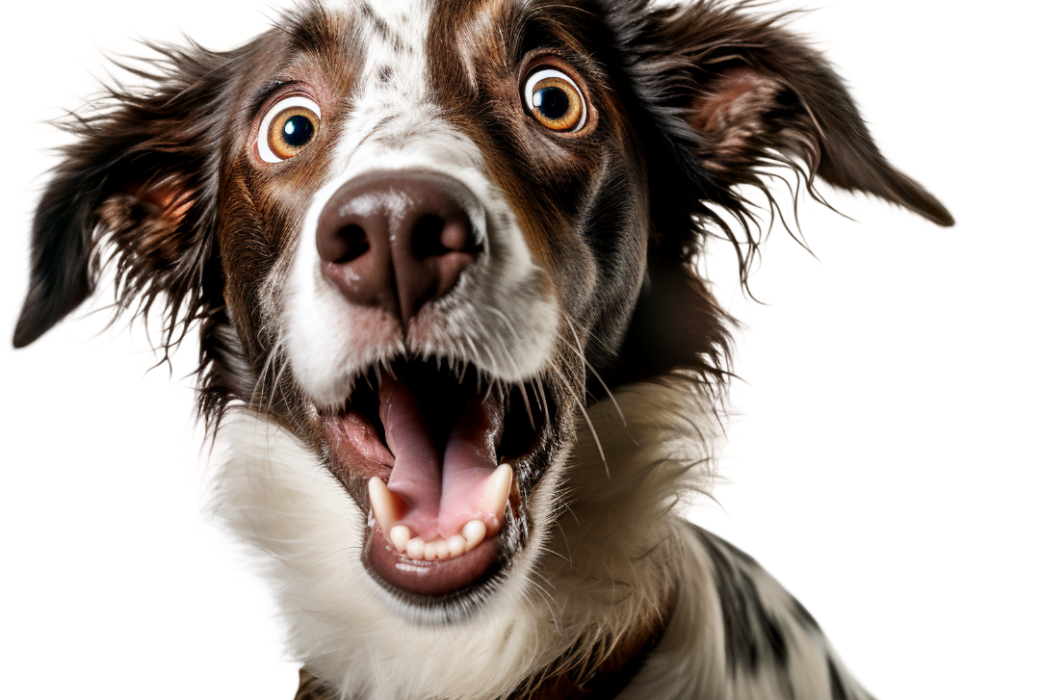Dogs are known as “man’s best friend” for a reason. Their boundless energy, loyalty, and ability to connect with humans on a deep emotional level make them truly remarkable creatures. One of the most intriguing aspects of dogs is their ability to communicate with us, not just through barking or body language, but also through their facial expressions.
What our furry friends might be trying to tell us with their expressive faces?
- The Eyes Have It
Dogs have a wide range of expressions that are primarily conveyed through their eyes. Here are a few common canine eye expressions:
- Puppy Dog Eyes: You’ve probably seen this one before. It’s when your dog looks at you with big, round, pleading eyes. This expression is usually a sign of affection or a plea for attention or treats. The raised inner eyebrows make them appear more vulnerable and irresistible.
- Hard Stare: On the other end of the spectrum, a dog’s hard stare, with a fixed and intense gaze, can be a sign of alertness, territorial behavior, or a signal that they’re on high alert. It’s important to pay attention to the context to understand the meaning behind this expression.
- Squinting or Blinking: Dogs often squint or blink when they are feeling relaxed and content. This expression conveys trust and comfort, indicating that your dog feels safe in your presence.
- Ear Expressions
Dogs’ ears are incredibly expressive, and their positions can tell you a lot about their mood and feelings:
- Forward and Erect: When a dog’s ears are forward and upright, it often means they are attentive, alert, or excited. This is a common expression when they’re about to go for a walk or play fetch.
- Pinned Back: Ears that are pressed flat against the head usually indicate fear, submission, or discomfort. Dogs may do this when they encounter something scary or unfamiliar.
- Slightly Tilted: A dog with ears slightly tilted forward may be displaying curiosity or interest. They’re trying to gather information about their surroundings.
- Mouth and Lips
The position and movement of a dog’s mouth and lips also play a significant role in their facial expressions:
- Smiling: Dogs can exhibit a genuine smile. This is often seen when they are happy and relaxed. A relaxed mouth with slightly open lips can give the impression of a smile.
- Lip Licking: This can be a sign of nervousness or anxiety. Dogs may lick their lips when they are uncomfortable or in a new environment.
- Baring Teeth: When a dog snarls or shows its teeth, it’s usually a sign of aggression or warning. This expression is a clear indication that the dog feels threatened or agitated.
- Wrinkles and Forehead
Some dog breeds have more pronounced wrinkles on their foreheads than others. These wrinkles can convey different emotions:
- Relaxed Wrinkles: In a calm and content dog, wrinkles on the forehead are generally smooth and unnoticeable.
- Tensed Wrinkles: When a dog is anxious, worried, or in pain, the wrinkles on their forehead may become more prominent. This is a sign that something is bothering them.
Understanding your dog’s facial expressions is crucial for building a strong bond and ensuring their well-being. While dogs can’t speak our language, they communicate with us in many other ways, and their faces are a rich source of information. By paying attention to their eyes, ears, mouth, and forehead, you can gain insight into your furry friend’s emotions and needs. So the next time you look into your dog’s eyes, remember that they may be telling you more than you think with those expressive faces.

